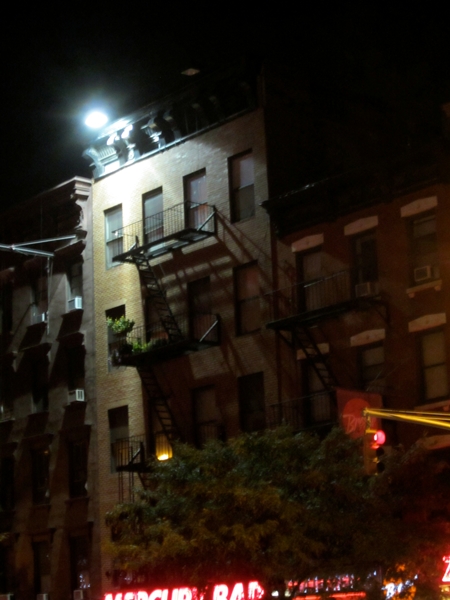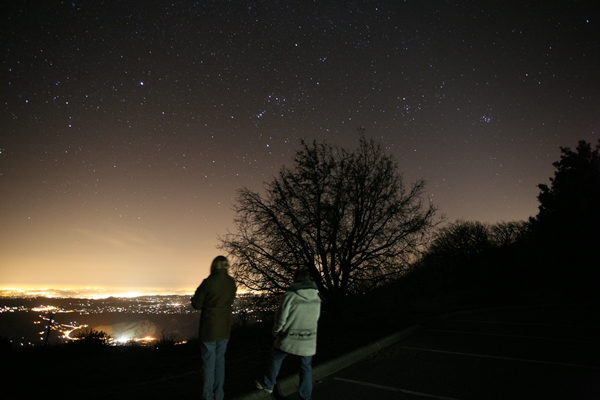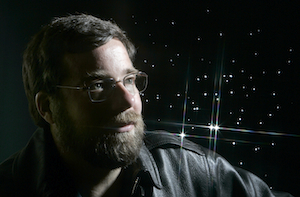Report
by Scott Kardel
A word of warning: Beware of traveling with me in town at night. Maybe that isn’t the best way to introduce myself, but I felt the need to caution the reader. I have a nasty habit of pointing out bad lights.
As we journey together on this blog we are likely to encounter examples of bad lighting and I hope that you will excuse me when I point them out. You already likely know what I am talking about—lights that shine right in your eyes producing glare, lights that are unnecessarily bright, lights that wastefully shine into the sky.

Glare from bad lighting can make you uncomfortable and reduce visibility.
Lights such as these, and the fact that far too many people do not take or do not know the simple steps to correct them, are what keep most of us from seeing and enjoying a night sky full of stars. These lights also keep me up at night. It is not that they light up my bedroom (although that can lead to insomnia). Instead, I am sleepless because the lights make me worry that the next generation will not be able to see star-filled night skies. For all of human history the night sky has been a source of inspiration and wonder. The stars are fading behind the urban glow and I am worried that we will not be able to stop it.
The need to spread awareness of light pollution and how to fix it is what brought me to the dark side. For most of my adult life I have been focused on public outreach in astronomy. I was busy explaining the wonders of star clusters, how telescopes work and why research in astronomy is important. At the same time I saw that the glow of our cities was growing and that the stars, even from some relatively remote sites, were not as stellar as they once were.

Light trespassing into a bedroom window can ruin what might otherwise be a good night's sleep.
That’s why I changed careers. A little over a year ago I left my job explaining the awesome stuff happening at a cool research observatory and began working for the International Dark-Sky Association (IDA) http://www.darksky.org/. Fixing the city lights so that all of us can see more stars is part of what IDA is all about. IDA’s mission is also about reducing glare, light trespass and energy waste. It is a daunting, but easily solvable problem.
All too often people do not think much about what they are doing when making choices for outdoor lighting. They just add a light without paying attention to some easy, but important details. They are simple: Keep your lights pointed downward. Beyond that be sure to light only what is needed in the amount needed and only when it is needed.
In future posts from myself and our other bloggers we will explore problems and solutions of light pollution; how you can learn more about it and how to take action. We can dim the lights while still ensuring that what is needed for safety is appropriately used.
Join me on the dark side. Together, we can all make a difference and return more stars to our skies.

The lights of our cities are removing the stars from our skies, but it is not too late to fix the problem.
###
|
|
Scott Kardel has always had a love for astronomy and the universe. Growing up in the desert on the edge of Tucson, Arizona gave him a strong connection to the sky and the environment. He works for the International Dark-Sky Association helping to defend the night and was previously at Palomar Observatory. There he directed their public outreach programs and was the observatory’s representative on light pollution issues. |
My Recent Reports
Contact
| Location: | Sri Lanka  |
|---|---|
| Website: | thilinaheenatigala.blogspot.com |








Comments